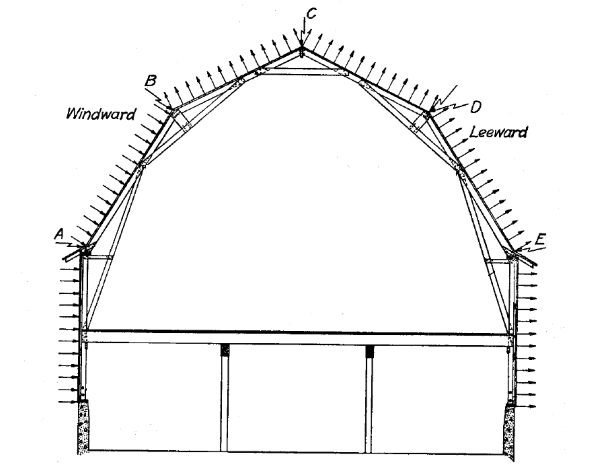Prometheus Farm
Agricultural
- Dec 30, 2019
- 4
Good Morning,
I am new to the group - thanks for the add. I had a 30' x 56' pole barn with a gambrel roof built by a local Amish contractor. I am now in the position of needed to defend (or re-mediate) the trusses they constructed using 3/4" plywood gussets that were both nailed and glued. They look rock solid to me, but the structural engineer I have been working is saying that they are "inadequate" stating that the 2 x 6 member size and gusset construction are not sufficient (to meet snow load, I assume). NYS code says, if I am understanding it correctly, is that handmade trusses are allowable if they designed to an engineers specifications. Okay fine, but just what are those specifications?? I have not been able to find any specs I can use to compare to my trusses. There was a thread last March on trusses with plywood gussets, and what I have seems to be in line with what you folks were talking about there. I am not engineer myself, but have had a fair bit of math and physics, so I can plug and chugg with the rest of them. Is anybody aware of any standardly recognized formulas or design criteria I can use?
I am new to the group - thanks for the add. I had a 30' x 56' pole barn with a gambrel roof built by a local Amish contractor. I am now in the position of needed to defend (or re-mediate) the trusses they constructed using 3/4" plywood gussets that were both nailed and glued. They look rock solid to me, but the structural engineer I have been working is saying that they are "inadequate" stating that the 2 x 6 member size and gusset construction are not sufficient (to meet snow load, I assume). NYS code says, if I am understanding it correctly, is that handmade trusses are allowable if they designed to an engineers specifications. Okay fine, but just what are those specifications?? I have not been able to find any specs I can use to compare to my trusses. There was a thread last March on trusses with plywood gussets, and what I have seems to be in line with what you folks were talking about there. I am not engineer myself, but have had a fair bit of math and physics, so I can plug and chugg with the rest of them. Is anybody aware of any standardly recognized formulas or design criteria I can use?


![[idea] [idea] [idea]](/data/assets/smilies/idea.gif)